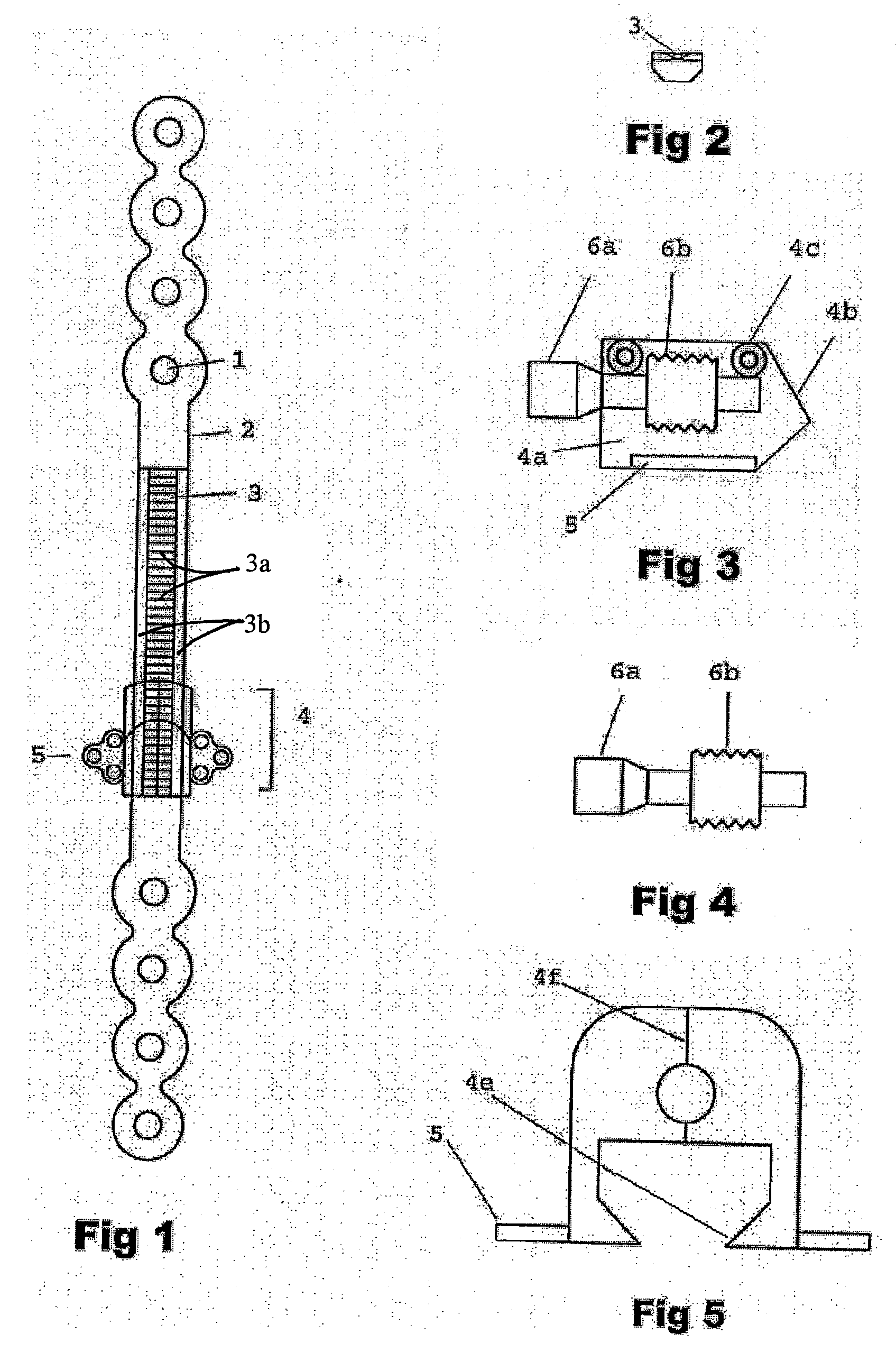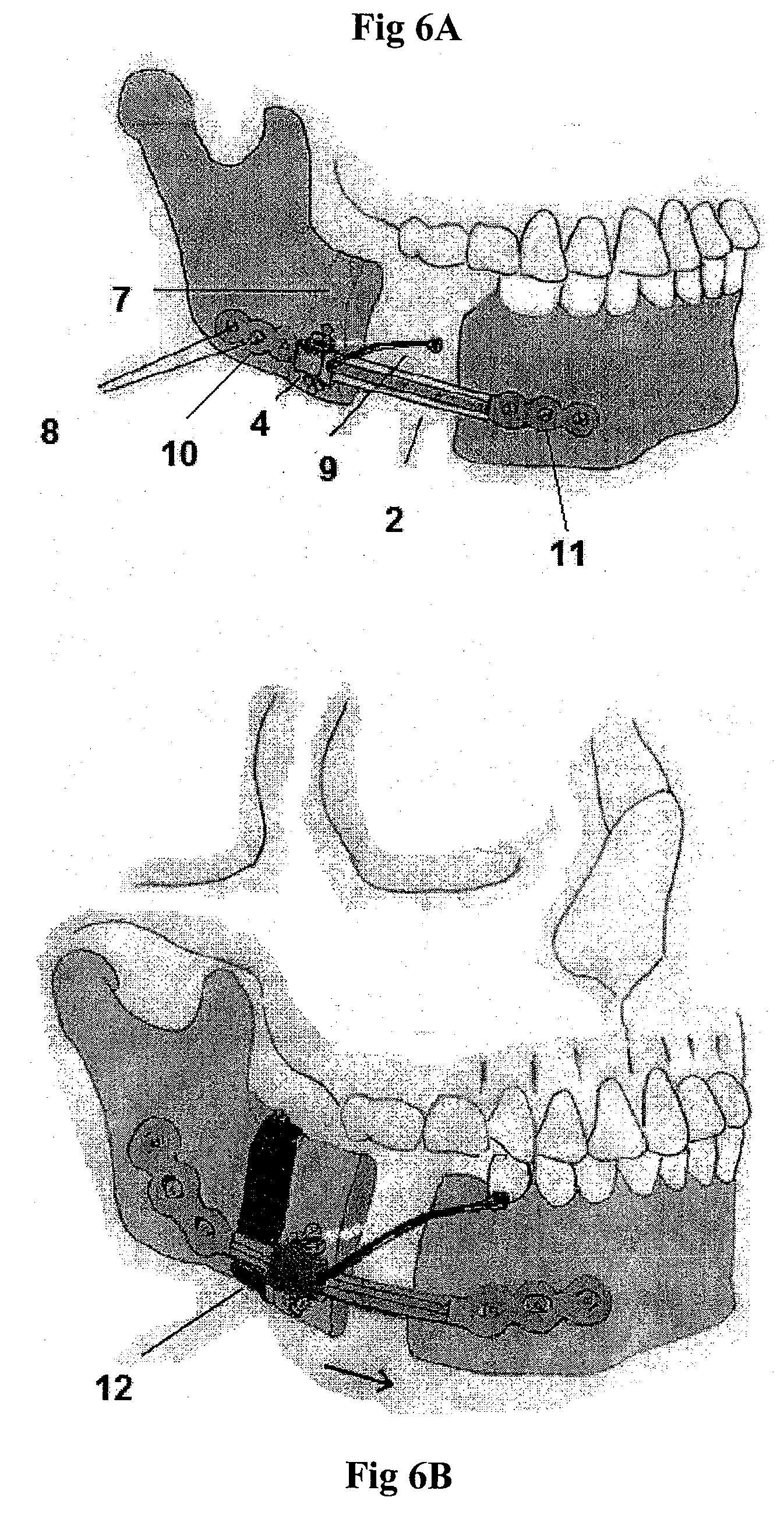Mandibular Bone Transport Reconstruction Plate
a mandibular bone and reconstruction plate technology, applied in the field of mandibular bone transport reconstruction plate, can solve the problems of difficult task, no complete satisfaction, and segmental bone loss, and achieve the effect of appropriate stability
- Summary
- Abstract
- Description
- Claims
- Application Information
AI Technical Summary
Benefits of technology
Problems solved by technology
Method used
Image
Examples
Embodiment Construction
[0027] This device can be used to create new bone to fill a gap in the mandible after surgical excision. It uses the rigid bone reconstruction plate as distraction device. The reconstruction plate fixes the bone stumps on both sides of the bone gap by large (2.3-2.7 mm, bicortical titanium bone screws). In the middle segment of the plate overlying the bone gap, the transport bone disc is carried on a transport unit that moves along a rail on the outer surface of the reconstruction plate when a screw within the unit is activated.
[0028] The device is composed of a traditional titanium mandibular reconstruction plate (FIG. 1) with a middle segment (2) that functions as a straight track over which a transport unit can be moved from one end of the track to the other. The middle segment of the plate will be overlying the bone gap that resulted from surgical bone removal for any reason. The two ends of the plate will be stabilized to the bone segments on both sides of the gap with 2.3-2.7...
PUM
 Login to View More
Login to View More Abstract
Description
Claims
Application Information
 Login to View More
Login to View More - R&D
- Intellectual Property
- Life Sciences
- Materials
- Tech Scout
- Unparalleled Data Quality
- Higher Quality Content
- 60% Fewer Hallucinations
Browse by: Latest US Patents, China's latest patents, Technical Efficacy Thesaurus, Application Domain, Technology Topic, Popular Technical Reports.
© 2025 PatSnap. All rights reserved.Legal|Privacy policy|Modern Slavery Act Transparency Statement|Sitemap|About US| Contact US: help@patsnap.com



